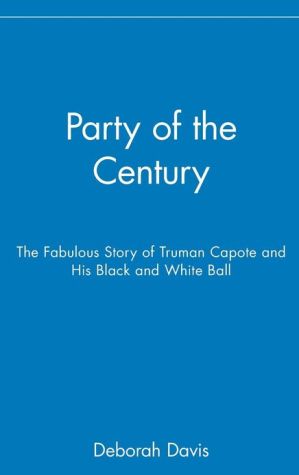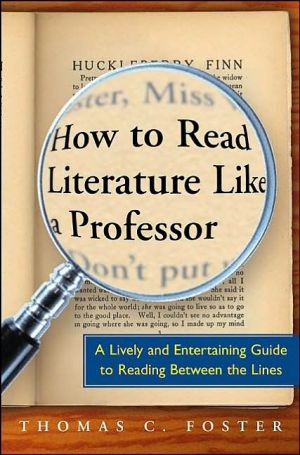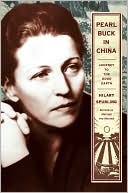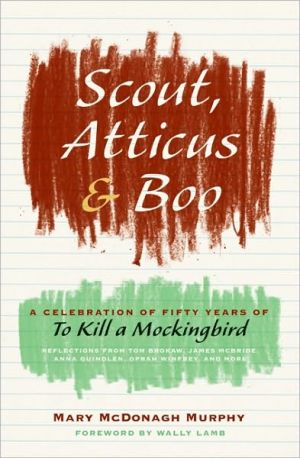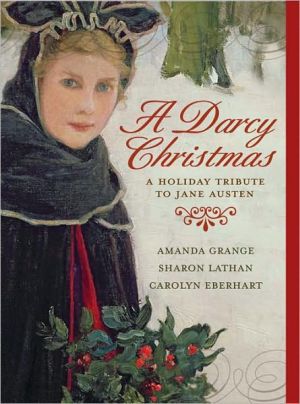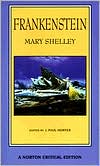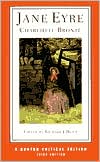Party Of The Century
In Party of the Century, Deborah Davis transports readers back to the Oz-like splendor of New York in 1966, where Truman Capote, at the pinnacle of his fame after the huge bestsellerdom of In Cold Blood, threw himself the party to end all parties. Everyone who was anyone wanted an invitation to Capote's "Black and White Dance," to which the guests were instructed to wear masks and just two colors-black and white. The glittering roster of guests included newlyweds Frank Sinatra and Mia Farrow,...
Search in google:
In 1966, everyone who was anyone wanted an invitation to Truman Capote's "Black and White Dance" in New York, and guests included Frank Sinatra, Norman Mailer, C. Z. Guest, Kennedys, Rockefellers, and more. Lavishly illustrated with photographs and drawings of the guests, this portrait of revelry at the height of the swirling, swinging sixties is a must for anyone interested in American popular culture and the lifestyles of the rich, famous, and talented.Publishers WeeklyTruman Capote's legendary masked ball, at New York City's Plaza Hotel on November 28, 1966, was a hyped-up media event meticulously masterminded by the self-promoting, social-climbing author of In Cold Blood. Davis (Strapless: John Singer Sargent and the Fall of Madame X) dishes up the menu, the decor, the outfits and the guest list of 540, clueing the reader in to how Capote dangled the prized invitations for months, snubbing early supporters like Carson McCullers as he determined who was "in" and who was "out." In choosing his guest of honor, Capote eschewed glamorous "swans" like Babe Paley and Marella Agnelli in favor of "dowdy" Washington Post publisher Katharine Graham. Actress Candice Bergen was bored at the ball; Capote's elevator man danced the night away with a woman who didn't know his pedigree; and Norman Mailer sounded off about Vietnam. This frothy effort retreads ground already covered by Gerald Clarke, George Plimpton and Sally Bedell Smith, among others. Black-and-white photos have frozen the beautiful people of the '60s in all their preening glory, and readers also get to see the invitation and the fashion sketches of the elaborate masks and headdresses created by Halston and Adolfo. (Mar.) Copyright 2005 Reed Business Information.
Party of the Century\ \ By Deborah Davis \ John Wiley & Sons\ ISBN: 0-471-65966-5 \ \ \ Chapter One\ A Lonely Boy \ Lillie Mae faulk was a beautiful teenage orphan who lived unhappily in the small, sleepy town of Monroeville, Alabama. Her cousins, the Faulks, had given her and her siblings a home after their mother died. Yet Lillie Mae was blind to the virtues of rural life-the relaxed pace and the familial atmosphere of this convivial southern community. A thrill-seeking teenager, she was eager to put the drawls and the dirt roads of Monroeville behind her. In 1923, escape came in the form of twenty-five-year-old Arch Persons, a fast-talking bachelor with a reputation as a ladies' man. His two biggest assets were his easy charm and a flashy sports car. Dazzled by both, Lillie Mae imagined driving off to the big cities of her dreams with her Prince Charming by her side. Her wish came true when she and Arch married impulsively soon after they met, and they set off on a grand honeymoon.\ Before Lillie Mae could congratulate herself on her brilliant escape, she was confronted by some unpleasant realities. Arch was not wealthy, not even comfortable: his finances were so shaky that he ran out of money during their two-week honeymoon and was forced to send his petulant bride right back to her relatives in Monroeville. Lillie Mae was smart enough to know that she was worse off than before the marriage: when she was single, life still held possibilities. The only sensible course ofaction was to seek a divorce. Nature intervened, however, and the unhappy bride became an even unhappier expectant mother. She told her relatives she wanted an abortion but never pursued the idea. Instead, she reconciled with Arch and went to live with him in New Orleans. On September 30, 1924, Lillie Mae gave birth to Truman Streckfus Persons, a beautiful, blond, doll-like infant.\ She may have hoped their beatific baby boy would transform her troubled marriage into a domestic fairy tale, but Lillie Mae and Arch were not made for each other. He was a con man, always in pursuit of a dollar and another big deal. She was a social climber, propelled by unrealistic aspirations and an uncontrollable libido. Both were far too self-absorbed to make any room in their lives for a child.\ Arch and Lillie Mae lived in a series of hotel rooms across America while they pursued their latest fantasies and get-rich-quick schemes. Even as a baby, Truman had been aware of his mother's assignations with other men. He was conscious of the handsome strangers who visited their rooms when Arch was away, images that remained with him for the rest of his life. His parents thought nothing of locking their young son in a hotel room while they went out for the night. Truman suffered this upsetting itinerant life, moving constantly until the age of six. At that point Lillie Mae, replicating her own childhood, deposited him with the Faulks in Monroeville. The town she had been so desperate to leave became her son's first real home.\ Monroeville was slow and hot, especially in the summer, when the temperature often shot up to over a hundred degrees. Residents rose in the darkness before dawn to take advantage of the cooler morning hours. By midday, when the heat was unbearable, women put away their aprons, bathed, dressed in freshly pressed frocks, and assumed their positions on the front porch, ready to visit and share the news of the day. The telephone switchboard was a source of up-to-the-minute information. Three operators alternated shifts, reporting the latest rumors as they connected calls.\ Meals, served unfailingly three times a day, were happy occasions. Breakfast, lunch, and dinner consisted of large, varied menus of southern specialties, including fried chicken, catfish, pork chops, grits, biscuits, and pies. On Sundays, the intimate family circle expanded to include others. Relatives, friends, and even newcomers and strangers were invited to partake of steak with brown gravy, always served on the family's best china.\ Gossip was everyone's favorite pastime. Gossip was not merely an exchange of information: it was a form of storytelling, a diversion, equivalent to listening to the radio or going to the picture show. The population was so closely knit that there were new dramas every day, with neighbors playing all the lead roles.\ When Truman settled into the Faulks' large, wood-framed house on South Alabama Avenue, his life changed completely. He became a member of a community steeped in history and tradition. Jennie Faulk, the forceful matriarch of the family, owned a dry goods store in the town square, the center of the Monroeville universe. Her sister Callie worked in the shop as a bookkeeper, while her other sister, Sook, kept house for the family and was assisted by an outspoken black cook, Aunt Liza. Bud, their brother, was quiet and withdrawn.\ Young Truman might have been lonely in this landscape filled primarily with old people, but Sook proved to be an ideal companion. Although she was a grown woman, a childhood illness had left her shy-as people said at the time, "simple." She liked to stay close to home where she felt secure, and when Truman arrived, she became his devoted playmate. She called him "Buddy" after a childhood friend and took him on excursions through the woods to find herbs for the special dropsy medicine she brewed and sold for pocket money. When the weather was fine, they flew kites in the nearby fields. On cold days, they played in the attic, where they unpacked boxes of old clothes and mementos. Sook often dressed Truman in antique finery-evening gloves, stoles, and dancing slippers-and told him, "Don't you look like an elegant lady ready for the ball?"\ The other members of the family were not as kind or playful as Sook. Truman described them many years later in his story "A Christmas Memory." "Other people inhabit the house," he wrote of the Faulks, "... and though they have power over us, and frequently make us cry, we are not, on the whole, too much aware of them." Together, Truman and Sook created a private world where they never had to feel like misfits or outsiders.\ Small, white-blond, and extremely precocious, Truman did not blend in with the children of Monroeville, who eyed him with suspicion. A teacher said he looked like "a bird of paradise in a flock of crows." Truman was always woefully overdressed, thanks to Lillie Mae's misguided idea of an appropriate summer wardrobe for a seven-year-old boy on a country vacation. She filled his suitcase with city-slicker ensembles, including linen shorts that buttoned onto tailored shirts and a Hawaiian swimsuit with a matching jacket.\ He was lucky to find an accepting friend in the house next door, a tomboy his age named Nelle Harper Lee. Truman made such an impression on Lee, who grew up to write the 1960 Pulitzer Prize-winning novel, To Kill a Mockingbird, that she based the character Dill on him. In her book, she described him as a "curiosity" with hair "stuck to his head like duckfluff." As soon as they started spending time together and discovered their mutual passion for books and spinning fantasies, the young neighbors were inseparable. He was a "pocket Merlin," Lee wrote, "whose head teemed with eccentric plans, strange longings, and quaint fancies."\ Monroeville offered many diversions during the long, lazy summers they spent together. The pharmacy in the town square had a first-rate soda fountain. Hatter's Mill, a dilapidated old building located next to a cool body of water, was a favorite swimming hole. And a giant tree in Lee's yard served as a retreat where the two friends could hide from the world and play their elaborate games of pretend. They would be Tom Sawyer and Huck Finn adrift on the Mississippi until the next book they read dictated their new roles. Spinning tales came naturally to Truman, who, even as a child, recorded his observations and ideas in a journal. He enjoyed writing and was so confident about his early literary efforts that he entered a short story contest sponsored by a local newspaper.\ His story, "Mrs. Busybody," was a candid account of the meddling ways of a local gossip. He hoped it would win him a pony from Alabama's Mobile Press Register. Instead, the story almost landed him in hot water because it was rumored that he had based his characters on Lee's parents. Truman pretended to be contrite and told people he had given up writing. He lied-he was writing constantly, using words and ideas to explore worlds that were otherwise inaccessible to a young boy.\ Far away from their son, Lillie Mae and Arch were busily pursuing their separate lives. Lillie Mae fulfilled a lifelong dream of moving to New York City, where she supported herself by working as a restaurant hostess. Hoping to advance socially and financially, she resumed the search for her real Prince Charming. Arch sought advancement, too, but his improbable schemes were usually derailed by bad luck or his penchant for larceny. He could not resist passing a bad check when he needed cash. Consequently, Arch spent considerable time in jail.\ Lillie Mae's prospects improved when she met Joseph Capote, a charming and successful Cuban businessman. They enjoyed a passionate relationship that seemed to have a future; he could provide her with the means to leave her hillbilly self behind. With her new man and her new situation came a new resolve. She asked Arch for a divorce, demanding custody of Truman.\ It was an unreasonable request, considering how little time she had spent with her son. But courts were predisposed to keeping children with their mothers, even if the mother in question had demonstrated little maternal instinct. In September 1931, Lillie Mae won the divorce and custody of Truman. The judge ruled that he would spend nine months a year with his mother and the remaining summer months with his father. Instead of claiming her prize, Lillie Mae deposited Truman in Monroeville while she returned to New York City. Eventually, she promised, she would send for her son.\ * * *\ One year later, Lillie Mae summoned Truman to his new home in New York. He had fantasized about this reunion for a long time and looked forward to living with his mother. Yet the transition from one world to another was quite difficult. Truman wanted to make sure his family and friends in Monroeville would remember him, so he decided to host a farewell party. According to his cousin Jennings Faulk Carter, Truman spent weeks planning the event and had definite, highly unconventional ideas for an eight-year-old boy. He invited his guests to attend a costume party in the evening, even though children in Monroeville did not normally entertain at night. The guest list was eclectic. Nelle, Jennings, and Truman's schoolmates were obvious choices. But Sonny Boular, a young recluse who was almost a man (and who would serve as the inspiration for the character Boo Radley in To Kill a Mockingbird), was an unusual addition. Truman even persuaded John White, a black field worker, to dress up in a white suit and oversee the apple-bobbing.\ The evening was filled with spectacle and drama. Instead of wearing a mask, Truman painted his face to look like Fu Manchu and pinned a pigtail to his hair. His guests enjoyed the elaborate party games he invented. They consumed treats prepared by Sook and Aunt Liza and listened to music on Jenny Faulk's phonograph.\ The most dramatic point of the evening was a surprise raid by the Ku Klux Klan. Local Klan members mistakenly believed that John White was a guest at the party. They took exception to the notion of a black man socializing with whites and decided to teach him a lesson with a rope. They seized a costumed guest they thought was John White, but it was the wrong person. When they pulled off their prisoner's mask, they found a terrified Sonny Boular. The Klansmen were lambasted by the townspeople for their foolish behavior, and they lost whatever tenuous standing they had in the community.\ Truman was delighted. His party had been a success.\ Truman soon left for New York as planned. Arch was still smarting over the loss of his son, and he appealed to the courts, testifying that his ex-wife was "fast" and irresponsible. There was mudslinging on each side. Arch's attempts to discredit Lillie Mae backfired when his own sordid state of affairs-his repeated run-ins with the law and his failure to pay child support-came to light. Neither parent was particularly qualified to raise a child, nor had they ever spent much time with their son, but Lillie Mae seemed the lesser of two evils, and the judge ruled against Arch. Lillie Mae married Joe and blocked Arch from any further custody attempts by convincing her new husband to legally adopt her son. At the age of nine, Truman Streckfus Persons became Truman Garcia Capote, a boy with a new name, a new address, and a new life.\ * * *\ Leo Lerman had no use for the lonely-child-in-Monroeville story that had become a stock part of Truman's history and claimed that he knew the exact moment when Truman first decided to host the ball. It was 1942, Lerman said, and he and "Marge" (his pet name for Truman, who playfully called him "Myrt") were fledgling writers taking a train to the artists' colony at Yaddo. Truman was largely unknown but supremely self-confident, and he bragged that when he was rich and famous, he'd entertain all of his rich and famous friends at a fabulous party.\ Truman dismissed Lerman's yarn as nonsense. But Lerman was such an entertaining raconteur and his anecdote was so colorful that it was repeated everywhere-at cocktail parties, at dinner tables, and even in newspapers-during the weeks leading up to the ball, and it, too, became a stock part of Truman's legend.\ (Continues...)\ \ \ \ Excerpted from Party of the Century by Deborah Davis Excerpted by permission.\ All rights reserved. No part of this excerpt may be reproduced or reprinted without permission in writing from the publisher.\ Excerpts are provided by Dial-A-Book Inc. solely for the personal use of visitors to this web site. \ \
Acknowledgments ixIntroduction 11966 5A Lonely Boy 9Small Man, Big Dreams 17Truman's Swans 33Romance and Sadness 36Babe Paley and High Society 43Gloria 53In Cold Blood 59Marella 69Truman and Kay 74Slim 89Riding a Wave 94C. Z. 104Dreaming of Masquerades 107Guest of Honor 114The In Crowd 123Making the List 135The Place to Be 151"Have You Heard?" 164How to Be Lovely 176Plumage 189The Clock Ticks 207Night of Nights 220Publicity 236Hangover 248Afterword 257The Guest List 261Notes 267Bibliography 278Credits 283Index 285
\ From Barnes & NobleThis beautiful book, bursting with photos and intriguing memorabilia, captures the glitz and glamour of Truman Capote's legendary Black and White Ball at the Plaza. Ostensibly a tribute to Washington Post publisher Kay Graham, the 1966 gala also provided a chance for the notoriously self-promoting Capote to celebrate the success of his new bestseller, In Cold Blood, with a roster of A-list guests from every sphere of influence. Deborah Davis has done full justice to a party that was every bit as extravagant and outrageous as its host.\ \ \ \ \ From the PublisherIn Party of the Century, Deborah Davis tells of the now legendary Black and White Ball. Truman Capote threw the bash at Manhattan's Plaza Hotel on Nov. 28, 1966. Its guest of honor was Katharine Graham, president of the Washington Post Co., but no one had any illusions: The purpose of this gala was to celebrate the host, a serious writer but also a celebrity. There had never been much doubt about the celebrity part -- from the moment that he styled himself as a male nymphet for his first novel's jacket photo, Capote had shown a rare talent for self-promotion. What had been in doubt was the literary prowess. As he entered his forties, the once-promising young writer had produced only a few slim volumes of exquisitely written fiction and journalism. But recently In Cold Blood -- a masterpiece in the literature of fact -- had routed the skeptics, and it was time to celebrate. Capote's plan, notes Davis, was to mix and match people: titled aristocrats with intellectuals with ordinary Joes from the rural Kansas county where the In Cold Blood murders had occurred. But in this respect, the party seems to have failed. "I've never seen such ghettoizing in all my life," complained Capote's lover, Jack Dunphy. "No group mixed with another group." As for the excluded, the book reproduces the cover of a subsequent Esquire issue. Under the rubric "We wouldn't have come even if you had invited us, Truman Capote" is pictured a surly-looking group comprising Jimmy Brown, Kim Novak, Tony Curtis, Pat Brown, Ed Sullivan, Pierre Salinger, Lynn Redgrave and Casey Stengel. (The Washington Post, June 4, 2006)\ "...opens up his [Truman Capote] vulnerable heart as well as, and more accurately than the film..." (Yorkshire Post, June 2006)\ "...gripping...very enjoyable in a voyeuristic way...." (Observer, April 2006)\ "...Davis's excitement about the ball and its organisation is contagious...there is room too, for this stylish, sparkling little volume...." (Sunday Times, April 2006)\ "...full of lavish photographs and anecdotes detailing the glitz and glamour of Truman's infamous black and white masked ball..." (Stella Magazine, April 2006) \ "...an interesting read and a must for all Capote fans..." (The Western Daily Press, April 2006)\ "brings splendidly colorful behind-the-scenes action and players up front." (The New York Times, March 19, 2006)\ "...Davis details every glittering facet of the painstakingly planned bal masque ... an evocative testament to bygone elegance, etiquette and entertaining..." (Guardian, March 2006)\ "...captures the spirit and significance of the occasion with new material and fresh perspective, making this a party worth crashing..." (Town and Country, March 2005) \ Truman Capote's legendary masked ball, at New York City's Plaza Hotel on November 28, 1966, was a hyped-up media event meticulously masterminded by the self-promoting, social-climbing author of In Cold Blood. Davis (Strapless: John Singer Sargent and the Fall of Madame X) dishes up the menu, the decor, the outfits and the guest list of 540, clueing the reader in to how Capote dangled the prized invitations for months, snubbing early supporters like Carson McCullers as he determined who was "in" and who was "out." In choosing his guest of honor, Capote eschewed glamorous "swans" like Babe Paley and Marella Agnelli in favor of "dowdy" Washington Post publisher Katharine Graham. Actress Candice Bergen was bored at the ball; Capote's elevator man danced the night away with a woman who didn't know his pedigree; and Norman Mailer sounded off about Vietnam. This frothy effort retreads ground already covered by Gerald Clarke, George Plimpton and Sally Bedell Smith, among others. Black-and-white photos have frozen the beautiful people of the '60s in all their preening glory, and readers also get to see the invitation and the fashion sketches of the elaborate masks and headdresses created by Halston and Adolfo. (Mar.) (Publishers Weekly, December 12, 2005)\ \ \ \ Publishers WeeklyTruman Capote's legendary masked ball, at New York City's Plaza Hotel on November 28, 1966, was a hyped-up media event meticulously masterminded by the self-promoting, social-climbing author of In Cold Blood. Davis (Strapless: John Singer Sargent and the Fall of Madame X) dishes up the menu, the decor, the outfits and the guest list of 540, clueing the reader in to how Capote dangled the prized invitations for months, snubbing early supporters like Carson McCullers as he determined who was "in" and who was "out." In choosing his guest of honor, Capote eschewed glamorous "swans" like Babe Paley and Marella Agnelli in favor of "dowdy" Washington Post publisher Katharine Graham. Actress Candice Bergen was bored at the ball; Capote's elevator man danced the night away with a woman who didn't know his pedigree; and Norman Mailer sounded off about Vietnam. This frothy effort retreads ground already covered by Gerald Clarke, George Plimpton and Sally Bedell Smith, among others. Black-and-white photos have frozen the beautiful people of the '60s in all their preening glory, and readers also get to see the invitation and the fashion sketches of the elaborate masks and headdresses created by Halston and Adolfo. (Mar.) Copyright 2005 Reed Business Information.\ \ \ \ \ Library JournalIn 1966, Truman Capote threw an elaborate formal ball at the Plaza Hotel in New York, ostensibly in honor of Washington Post publisher Katharine Graham. The focus was really on Capote himself, a rising star following the publication of his "nonfiction novel," In Cold Blood. Davis (Strapless), who gained access to Capote's personal documents, here provides some biographical information on Capote but focuses much of the book on the actual guests, who included Hollywood stars (Gregory Peck, Vivian Leigh), Rat Pack crooners (Frank Sinatra, Sammy Davis Jr.), literary giants (Norman Mailer, Tennessee Williams), society regulars (the Rockefellers, the Whitneys), royalty, and even Kansas friends Capote had made while researching his book. It's a look inside the world of the rich, famous, and beautiful through the context of a much-publicized event that brought Hollywood, New York, and Washington, DC, together in a way that had never happened before. A fast-paced, eclectic, and engaging work, it covers everything from the origin of the Best Dressed List and the fitting of designer gowns to the politics of high society. Recent films about Capote may generate interest for this topic. Recommended for public libraries and for academic libraries with strong popular culture or fashion design collections.-Alison M. Lewis, Drexel Univ. Lib., Philadelphia Copyright 2006 Reed Business Information.\ \
